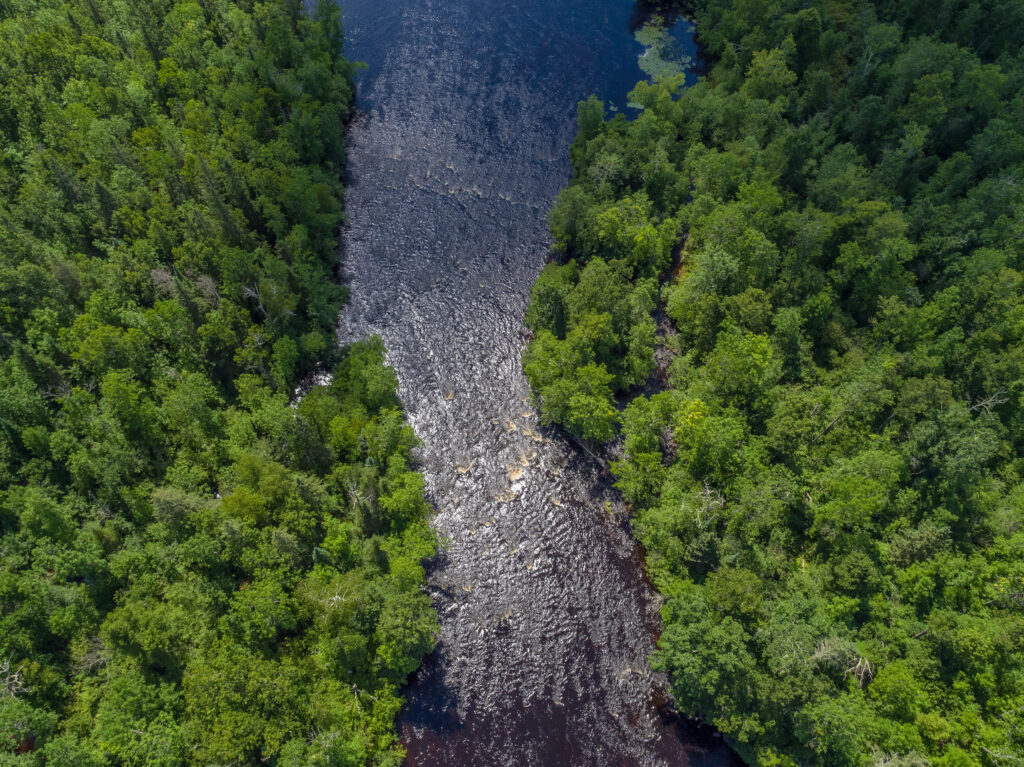Did you know that out of the over 250 tributaries that dump into the mighty Mississippi, the St. Croix River is the cleanest? The exceptional water quality of the Croix was a key factor when designating the Riverway to be a wild and scenic river and a national park. Clean water makes it much more enjoyable to partake in the various recreational opportunities the Riverway has to offer and supports diverse habitats for its wildlife.
In the upper reaches of the river, the good water quality reflects the surrounding land, primarily forests, and wetlands. As the river flows south, development has modified the landscape reflecting both urban and agricultural use. These variations mean more phosphorus comes into the river from runoff and wastewater discharges.
In 2008, the St. Croix River was listed as one of the nation's top 10 endangered rivers. That same year the lower St. Croix River, otherwise known as Lake St. Croix was designated as impaired and in need of improved water quality and better protection; stretches of the St. Croix River had too much phosphorus. Though naturally occurring, excess phosphorus can harm aquatic life by causing excess algae growth and declines in dissolved oxygen in the water.

While most algae are a natural part of the river's ecosystem, some can be considered harmful and are a global concern that threatens human and aquatic ecosystem health. Harmful algal blooms, or HABs, are made up of microscopic organisms known as cyanobacteria or ‘blue-green algae’ and can cause acute and chronic illnesses in humans and wildlife. HABs occur when cyanobacteria undergo a period of rapid growth in a waterbody, often associated with abundant nutrients such as phosphorus, increased water temperatures, and calm, stagnant water. Frequent algae blooms mean less clear water making boating, fishing, and swimming less enjoyable and can also contribute to economic loss for recreation-dependent industries.

Lake St. Croix is known to get these dreaded HABs mid to late summer, especially near high recreational areas such as Bayport City Park, Afton State Park, and St. Croix Bluffs Regional Park. The Wild Rivers Conservancy has partnered with the US Geological Survey and the St. Croix National Scenic Riverway (NPS) since 2014 to co-lead a citizen science effort called Algae Alert Network to track and document recurring and persistent surface cyanobacterial blooms. This monitoring effort has covered much of the lower St. Croix River from the confluence with the Sunrise River south to Stillwater, MN, and from the four distinct pools of Lake St. Croix. With this vital work, we can monitor HABs throughout the Riverway and alert municipalities as soon as possible once we assess whether the algae bloom consists of cyanobacteria that produce harmful toxins.
Interested in doing your part to prevent HABs in the St. Croix Riverway?
Here are a few ways you can help:
- Reduce runoff from your property with infiltration projects such as native plantings and rain gardens. Runoff carries potentially harmful nutrients, sediment, and salt to water bodies.
- Reduce or eliminate the use of lawn fertilizers and other chemicals.
- Use non-salt forms of de-icer on sidewalks and driveways.

